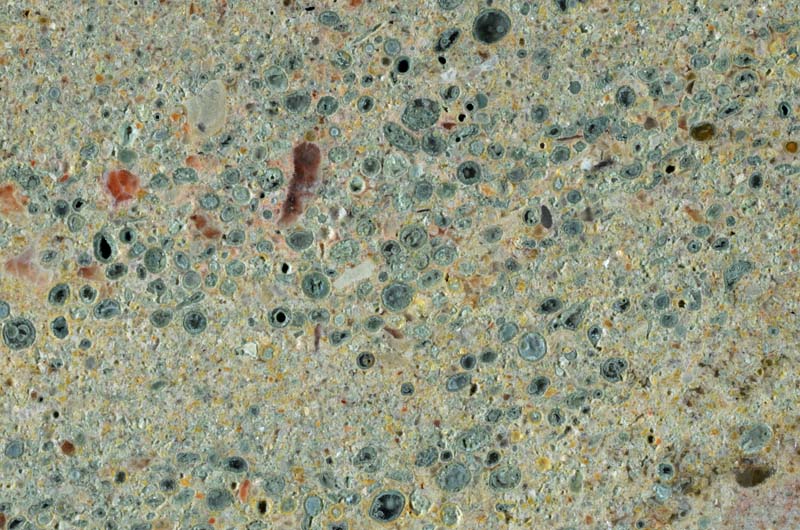
Fact sheet
This sample is part of a Late Triassic Meteorite impact deposit in SW England. This deposit found near Bristol appears to indicate that Britain was showered with a fine layer of debris from an asteroid impact at the Manicouagan Impact Crater in Canada. The deposit was probably an ephemeral lake in an arid environment and is not extensive. It is thus a protected locality but we are able to include this virtual rock in our collection of British meteorites.
The rock is one of only two pieces of evidence that meteorites have been falling on the Britain over geological time. The other deposit, at Stac Fada in Scotland is Proterozoic in age.
The rock contains shocked quartz grains, and a range of other broken and shocked minerals and remnant glass. The prominent green balls are clay remnants of glass spheres that were altered soon after they formed. The rock is cemented by a form of K-feldspar known as adularia, and this has helped pin point the age using Ar-Ar dating.
The United Kingdom Virtual Microscope (UKVM) collection consists of igneous, sedimentary and metamorphic rocks from around the UK.
It is intended as a teaching resource, helping to tell the story of the common rock types and how they form, and reflecting the history of the UK at the margins of the continent of Europe. The collection is a series of teaching sets, for example igneous rocks from the North Atlantic Igneous Province and SW England; high-temperature metamorphic rocks from Scotland and low-temperature metamorphic rocks from Wales; and sedimentary rocks, including English limestones and sandstones.






